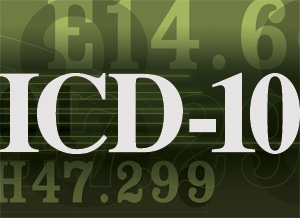 Provider Processes to Consider Testing Now for ICD-10
Provider Processes to Consider Testing Now for ICD-10
By Brien N. Keller
Santa Rosa Consulting
I’m a big fan of lists. I especially enjoy lists that are meaningful and accomplishable. After I read Steve Sisko’s blog, “11 Areas to Consider When Testing ICD-10 Impact to Payer Business Processes,” I was inspired to share a list for Providers – which I’m practicing at my current client.
I hope you can garner an item or two for your own list. Even if everything isn’t quite ready for ICD-10, you can begin to identify/validate areas of concern with a few simple “tests.” It’s time to get started – best of luck!
1. DRG and Reimbursement Impacts: There is enough information available, and a good number of supporting tools, that one of your Payers is probably ready to exchange ICD-10 claims with you (spreadsheets work great for this early testing). Identify some previously paid claims (those from your top paying DRGs would be nice), pull the medical records for those claims, and then get them re-coded in ICD-10. You’ll be surprised – real outcomes from real Payer systems are very meaningful to both parties. The goal should be to understand if you and your Payer on on the same page; regardless of your current contract.
2. Clinical Documentation Readiness: The heart of all coding is the documentation from which the code is generated. Your CDI team can begin testing for foundational yet far reaching impacts today. Setup a process with between your Coders and your CDI Specialists to gauge where key items fall like laterality, fracture locations, and indication of initial vs. subsequent encounters. The goal is to get the easy stuff out of the way now!
3. Coder Proficiency: One size does NOT fit all. You can test your coders today so that you gain an early and accurate appreciation of the education you’ll need to provide. Whether it’s detailed anatomy and physiology, or accuracy tuning with specific chapters, you need to tailor education plans to your staff’s capability. You may also get a sense of where you’ll experience the greatest productivity decline. The goal is to test skills and understand where you need to focus energy on honing those skills.
4. “Technical” Technology Readiness: Foundationally, your technology (application systems, interfaces, reports, etc.) must accommodate a longer field and a different field type. If you haven’t done so already, it’s time to run an ICD-10 code through your technology and identify where it falters. Remember that this is “technical” testing, not “logic” testing. The goal is to ensure your technology can carry and ICD-10 code (as opposed to use an ICD-10 code).
5. “Logical” Technology Readiness: Your technology needs to apply is decision-making processes using ICD-10. If you’ve verified you are “technically” ready, then it’s time to verify that no decision point fails. You won’t need a complete cross-reference of ICD-9 to ICD-10 to accomplish…think on a smaller scale. You will need; however, a handful of robust, controlled scenarios that are cross-referenced. The goal should be to ensure data isn’t “lost.”
